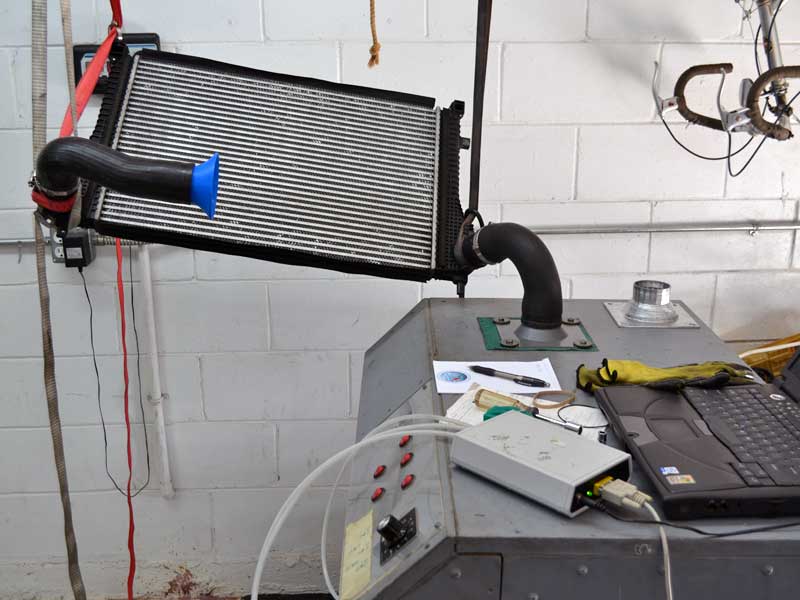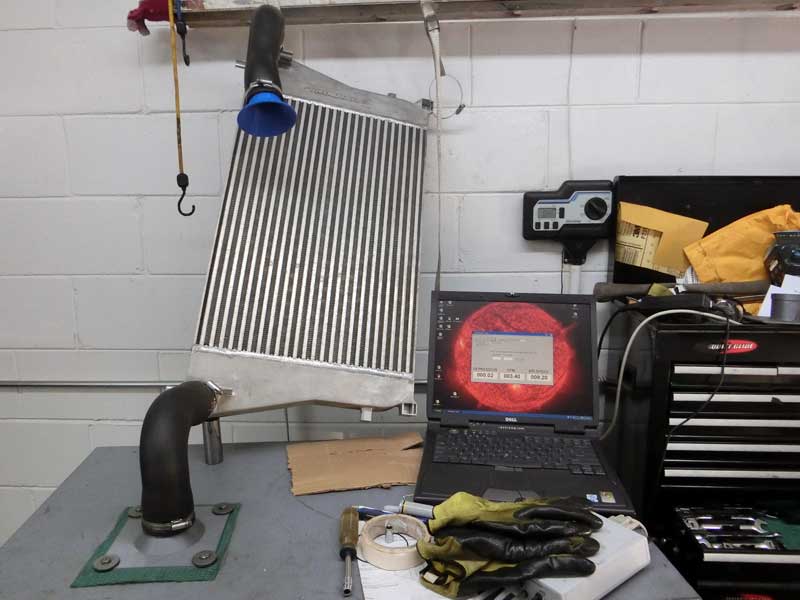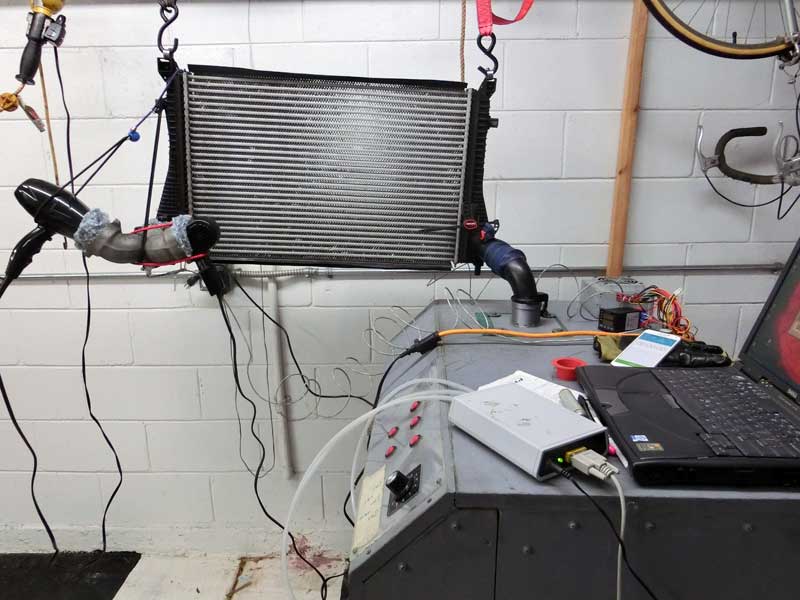Background:
Searching for the best intercooler to install on my GTI will involve comparing products using several approaches. With both the stock GTI intercooler and the Unitronic IC available to me a comparison is made using bench testing methods. Two aspects of performance are to be measured; pressure drop across the intercooler and cooling efficiency.
Test Method:
Pressure drop is measured using a flow bench. A number of intercooler products have already been tested using this tool.
Rationale: All test methods have pros and cons. In the case of the flow bench the pros are repeatability, measurement resolution, and ease of testing. The cons are airflow and density conditions that are not representative of those on the GTI when operating under boost. The shortcomings of the conditions on the flowbench are reduced for the decision making process by making relative comparisons between the different intercoolers. The airflow measurement may not be the same as that through the intake on the car, but one intercooler performing better or worse than another on the flow bench will translate to similar ranked performance on the car.
Cooling efficiency is measured using a bench temperature test.
Rationale: This bench test has similar benefits as the flow bench, repeatability and ease of testing. The bench temperature test is less representative of the conditions on the vehicle. As testing progresses how well the bench test correlates with on-vehicle performance should be determined.
Test Results:
Flow bench



Bench Temperature


Combined Results:
The airflow measured at 28″ of H2O test depression and the temperature at 120 seconds into the Bench Temperature test are the values used to populate the chart below.

This chart addresses both cooling and airflow performance. Along the horizontal axis is the temperature increase measured at 2 minutes into the bench temperature test. Because this is the temperature of the air at the outlet of the intercooler a lower temperature rise is associated with better cooling performance.
In the chart above the Unitronic intercooler performs better at cooling than the stock intercooler, shown by the Unitronic intercooler being on the left side of the chart.
The vertical axis is the airflow through the intercooler at the designated test depression. A higher value indicates more airflow passing through the intercooler. The Unitronic IC is positioned higher on this axis indicating that it has higher airflow than the stock GTI intercooler.
With two properties addressed on this chart where the products are placed indicates how they compare with ‘best case’ and ‘worst case’ results. Best case is an intercooler that cools well and achieves high airflow, this region is in the upper left corner of the chart. Worst case performance is high temperature increase and low airflow. This area is the lower right side of the chart.
The shaded areas indicate thresholds of performance. The performance values I am interested in seeing an intercooler achieve should be within the shaded regions. The ‘best’ performing intercooler by my criteria should reside in the overlapping shaded area of the upper left corner of the chart.
Conclusion:
From the pair of bench tests the Unitronic intercooler outperforms the GTI stock intercooler both in cooling and airflow performance.


That is a surprisingly poor showing for the Stock IC.
I know it has long been considered a weak link for the GTI/Golf R, but I did not expect such a marked difference. Most logs indicate an average of 15-20 degree drop from stock vs. most aftermarket units across multiple runs, but the contrast here is stark. I was expecting closer readings given the conditions. Electric fans are far from a perfect representation of airflow on the road, but they should be consistent across tests.
Do you still have access to the others you have tested in the past? If so, I guess we will see how the others pan out.
Again, thanks for your efforts. I have been sharing your tests and data with every VW owner I know.
You’re welcome. I do have access to some of the intercoolers I’ve previously flow tested and I’ll be running this test on them as well. As I get a couple more data points I’m hoping to be able to see if these results correlate with measurements made on the car. I’m guessing that this test will only be useful for making relative comparisons.
As intake posts have comments closed
Do you think increasing the volume of the stock airbox lid would make any difference?
Making it a bit taller by Frankenstein 2 lids into one
Thank you
It probably wouldn’t make much of a difference.